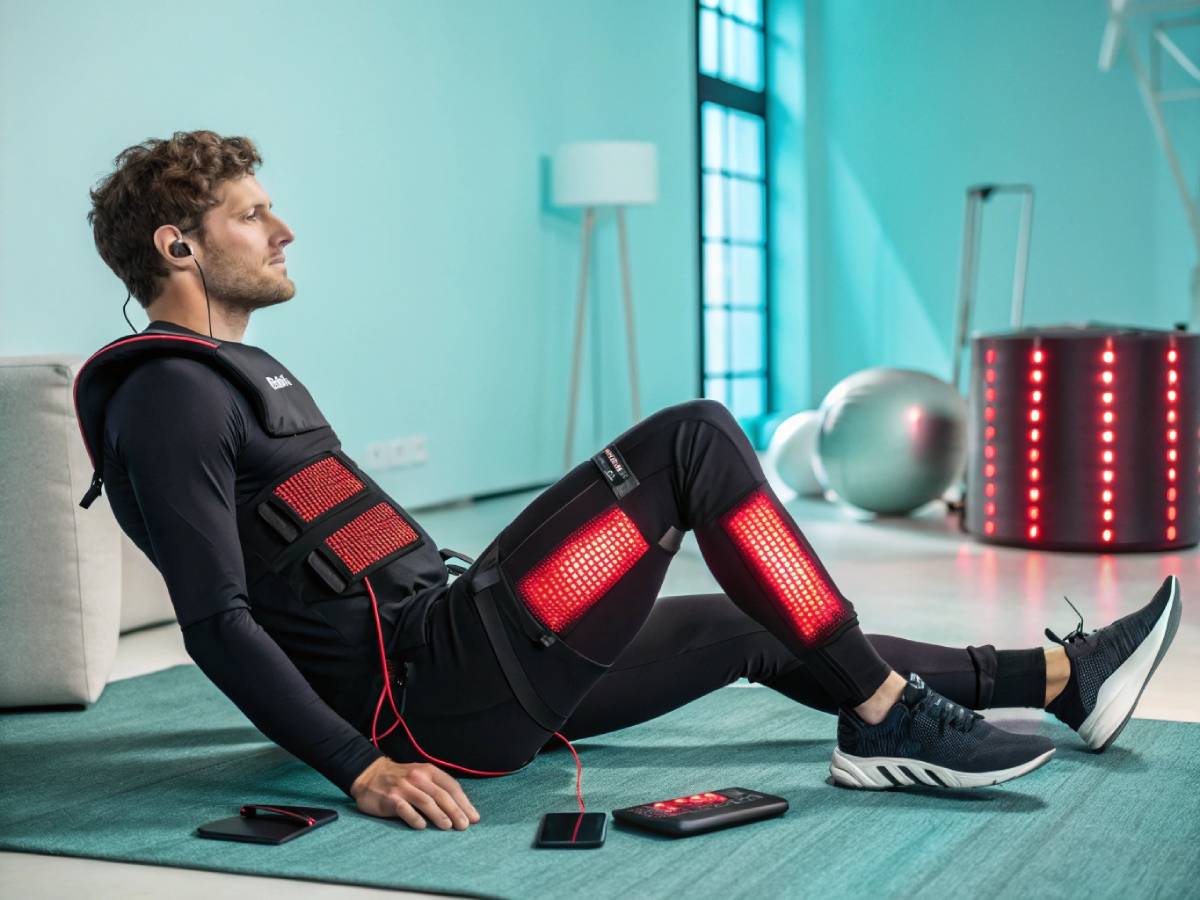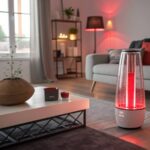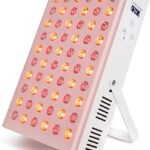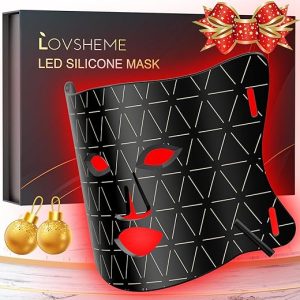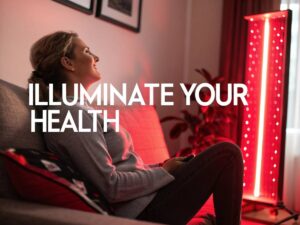Red light therapy and compression recovery are transforming athletic performance and recovery, sparking curiosity among sports enthusiasts and health professionals alike.
Imagine a recovery method that not only soothes post-workout pain but also accelerates healing at the cellular level—red light therapy offers just that.
With science-backed evidence and a natural, non-invasive approach, this technique is capturing the attention of athletes looking to push their limits while reducing downtime.
Meanwhile, compression recovery continues to provide a comforting, familiar alternative.
This article dives deep into both modalities, comparing benefits, drawbacks, and real-world applications, ensuring you make an informed decision for optimal performance.
Red Light Therapy Benefits
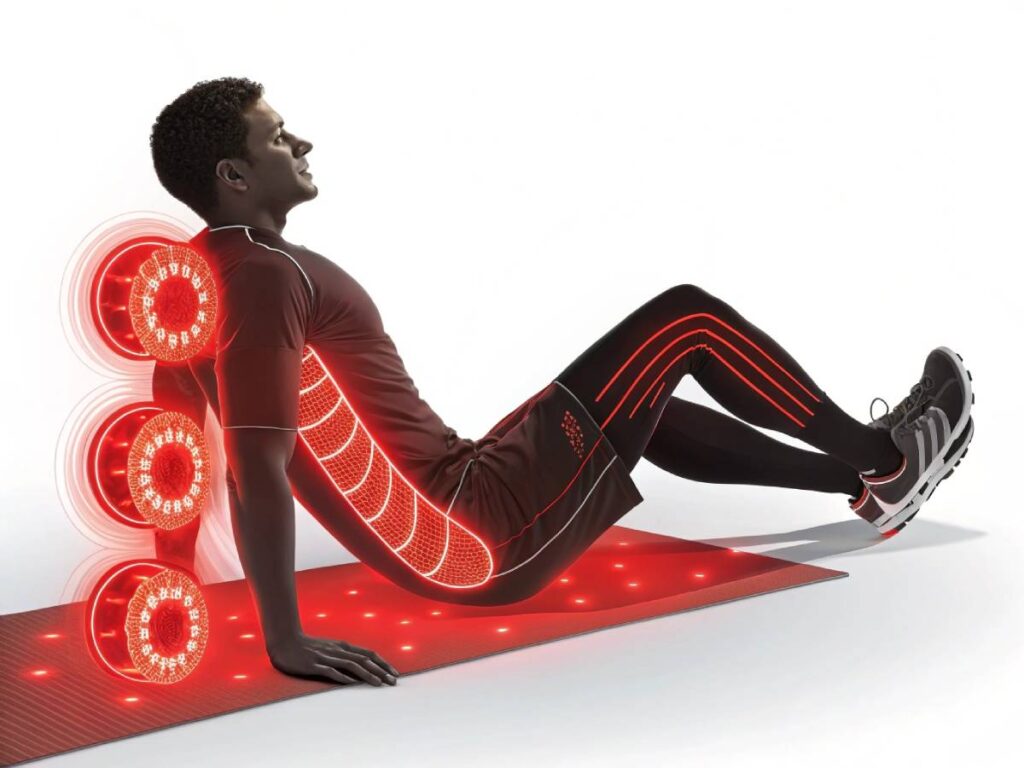
Athletes are buzzing about red light therapy and its potential to improve recovery and performance. Let’s take a look at how this technology works and the evidence backing its benefits.
How It Works
This therapy uses low-level red or near-infrared light to kickstart cell action. When the light hits the mitochondria in cells, these powerhouses crank up energy production in the form of ATP, which spurs on healing.
Here’s what red light therapy does biologically:
- Calms Down Inflammation: Reduces inflammation, a must for bouncing back after workouts.
- Fires Up Collagen Production: Encourages fibroblast growth for faster tissue repair.
- Encourages New Blood Vessels: Boosts oxygen and nutrients to hurt areas.
- Helps Form New Tissue: Supports wound and injury healing (PubMed Central).
With these effects, red light therapy could be just the ticket for athletes wanting a quicker comeback. For the geeky details, check our page on red light therapy for athletes.
The Proof is in the Pudding
Loads of research supports red light therapy, especially in sports recovery and skin health. Some standout findings:
- Post-Workout Recovery: Studies say red light therapy beats cryotherapy in cutting down muscle soreness (DOMS), inflammation, and damage after a tough workout. A gem for athletes wanting speedy recovery (Medco-Athletics).
- Healing Cuts and Scrapes: Both LED and LASER options are great at helping skin heal by lowering inflammation, upping fibroblast action, promoting blood vessels, and encouraging collagen. A plus for injured athletes.
- Beauty Business: Low-level light therapy (LLLT) works wonders in dermatology too, tackling hair loss issues and improving lipo results (Science.gov). Red light isn’t just for muscle men and women.
| Therapy Type | Benefits | % |
|---|---|---|
| Red Light (LED & LASER) | Fewer inflammatory cells | High |
| Boosts fibroblast growth | High | |
| Promotes new blood vessels | Moderate | |
| Cryotherapy | Cuts blood flow | Moderate |
| Reduces swelling | Moderate | |
| No cellular boost | Low |
For athletes thinking about adding red light therapy to their toolkit, there are red light therapy devices for sports specially made for you. Also, find out about the best red light therapy panels for muscle recovery to get the most out of it.
Based on these findings, red light therapy offers solid science for improving recovery and performance, making it a no-brainer for athletes, fitness buffs, therapists, and coaches. Want more tips? Check out our guide on professional red light therapy equipment.
Red Light Therapy Applications
Exercise Recovery
Athletes serious about bouncing back from workouts have something to rave about: red light therapy (RLT). According to a study from Medco-Athletics, it outshines cryotherapy in post-exercise recovery. One of the standout perks? It tackles delayed onset muscle soreness (DOMS) like a champ. RLT gets right into those muscle tissues, bringing down the inflammation and guarding against damage from tough workouts. Consider adding RLT to any recovery routine. For a deeper dive into RLT for muscle recovery, check out our muscle recovery and doms articles.
| Benefit | Red Light Therapy | Cryotherapy |
|---|---|---|
| Cuts Down Muscle Soreness | Yes | Yes |
| Lowers Inflammation | Yes | Yes |
| Stops Muscle Damage | Yes | No |
| Top-Notch Recovery Aid | Yes | No |
Aesthetic Medicine
In aesthetic medicine, low-level light therapy (LLLT) is catching eyes, and red light therapy is a big part of that (Science.gov).
LLLT isn’t just hype—it’s delivering real results for folks dealing with hair loss. It also boosts the effectiveness of lipoplasty and liposuction. RLT’s magic promotes skin wellness, speeds up healing, and makes skin look darn good, making it a go-to in beauty circles.
| Application | Red Light Therapy |
|---|---|
| Tackles Hair Loss | Yes |
| Boosts Skin Healing | Yes |
| Enhances Lipo Results | Yes |
| Supports Skin Wellness | Yes |
For athletes wanting to jump into red light therapy, whether for recovery or looks, our resources on athletes’ therapy and portable devices are worth a look.
Red light therapy is like a one-two punch: it packs in both performance boosting and skincare benefits, making it a handy tool in sports and beauty routines. Hungry for more? Check out our pages on sports injuries tips and joint pain relief.
Red Light Therapy vs. Compression
Choosing between red light therapy and compression for recovery can feel like picking between pizza and burgers—both are tasty, but for different cravings. Both these therapies promise relief from inflammation and a speedier healing process, so what’s the dish on each? Let’s dish it out so athletes, workout buffs, and pros can make a prime choice.
Inflammation Reduction
Red Light Therapy
Red Light Therapy (RLT) isn’t just some flashy gimmick; it’s all about sparking up your cellular engines. This therapy jazzes up your cells through mitochondria, amping up energy production like a double espresso for your muscle cells. Evidence spells out that RLT can chill muscle inflammation after a tough workout session.
RLT may also be a game changer for easing brain inflammation in conditions like Alzheimer’s, traumatic brain injuries, and depression. It’s like a mood ring with extra benefits—a broad-range champ beyond just sore muscle relief.
Compression Therapy
Compression’s like giving your muscles a cozy hug. By applying pressure, it reduces swelling and promotes a tour de force of blood flow and drainage, whisking away waste products like an Uber for toxins.
Compression shines in tackling acute inflammation. Though it might not tap into cell magic like RLT, it’s a go-to after workouts to beat soreness and puffiness, speeding up recovery straightaway.
| Therapy Type | Inflammation Reduction |
|---|---|
| Red Light Therapy | Helps reduce muscle and neuroinflammation through cell juice-up |
| Compression | Tackles swelling with pressure, boosting blood flow for quick relief |
Healing Processes
Red Light Therapy
RLT speeds up tissue mending and wound healing by tweaking biochemical paths, adjusting how cells shape up, move, and signal each other. This whole photobiomodulation business shoots up ATP production, the cell’s very own energy drink, jazzing up cellular recovery after muscle damage.
Athletes are drawn to RLT as it cuts down muscle soreness, keeping muscles peppy after heavy lifting sessions (Best Red Light Therapy for Athletes).
Compression Therapy
Compression, akin to reading glasses for aging eyes, helps muscle recovery by boosting blood circulation and giving muscles a solid brace. With more blood and oxygen flowing, tissues repair faster. Plus, compression gear supports muscles, reducing the risk of additional injuries while on the mend.
While perfect for post-exercise reco, compression lacks the deep cellular impact RLT offers. Curious about combining these therapies? Check our insights in the red light therapy vs ice bath article.
| Therapy Type | Healing Processes |
|---|---|
| Red Light Therapy | Cranks up ATP for cell revival and quickens tissue healing |
| Compression | Shoots up blood flow for prompt repair and supports muscle structure |
Each therapy brings unique flare-ups to the table. If you’re an athlete or fitness fan, think about your recovery style and what fits best. For more tips on blending these techniques into your routine, dive into our reads on red light therapy muscle recovery and red light therapy sports injuries.
Compression Therapy Considerations
When weighing your options about compression therapy, especially when you’re tossing up between red light therapy and compression recovery, it’s good to know the possible downsides. Whether you’re a pro-athlete or just hitting the gym for fun, understanding these elements can make your recovery plan way smoother.
Adverse Events
While compression therapy’s usually a breeze, sometimes it can throw a few unexpected surprises your way:
- Skin irritation, discomfort, and pain pop up quite a bit with compression therapy.
- Though less common, things like soft tissue or nerve injuries can sneak in sometimes.
- Annoyances like itching and dryness often show up, but they’re usually no big deal and can be managed while keeping up with the treatment.
| Adverse Event | Frequency | Management |
|---|---|---|
| Skin irritation | Common | Pretty manageable |
| Discomfort | Common | Pretty manageable |
| Pain | Common | Pretty manageable |
| Soft tissue injury | Rare | See a doctor |
| Nerve injury | Rare | See a doctor |
Skin Reactions
The skin might have a bit of a say in how it handles compression therapy:
- Irritation, itching, and dryness show up a lot, but usually, it’s nothing to hit the panic button over (PubMed Central).
- Allergies to compression materials aren’t the norm because the itchy materials are kept out. But if you use anything rubbery, just keep an eye out for allergic reactions.
| Skin Reaction | Frequency | Management |
|---|---|---|
| Irritation | Common | Pretty manageable |
| Itching | Common | Pretty manageable |
| Dryness | Common | Pretty manageable |
| Allergic reactions | Rare (rubber-based) | Steer clear of allergenic materials |
In general, compression therapy’s hiccups and skin issues are mostly minor. Avoiding the big issues is about being smart with your therapy approach. This way, both athletes and those into fitness can enrich their recovery routines. For more juicy details on the joys of red light therapy, dive into things like red light therapy muscle recovery and best red light therapy panels for muscle recovery.
Therapeutic Potential of Red Light Therapy
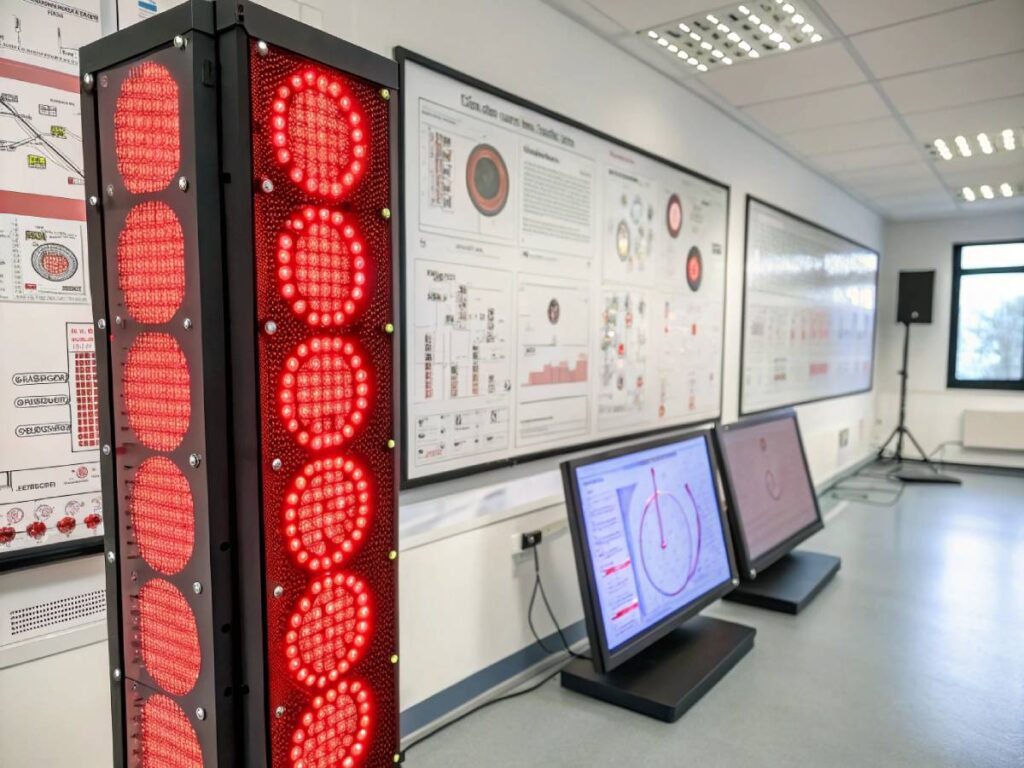
Red light therapy (RLT) is buzzing around the medical world, and folks are catching on to its potential for dealing with a bunch of health niggles. It shines the brightest when it comes to neurological issues and gut troubles, proving it’s more than just a rosy glow.
Neurological Conditions
Red light therapy isn’t just a pretty face—it’s doing some cool stuff in treating brain conditions like Alzheimer’s, brain injuries, and depression. What’s the magic? It turns down the volume on brain inflammation, the nasty stuff causing havoc up there. Research shows that red and near-infrared light can help clear the brain fog, improve thinking, and lift spirits (Performance Health).
| Neurological Condition | Potential Benefits |
|---|---|
| Alzheimer’s Disease | Less brain inflammation, sharper thinking |
| Traumatic Brain Injury (TBI) | Reduced stress, speedier recovery |
| Depression | Better mood, calmer brain |
For athletes diving headfirst into sports, keeping brain inflammation in check is crucial, especially in rough-and-tumble games where a good knock on the head isn’t rare. Knowing the red light therapy sports protocols can give athletes the upper hand in keeping their heads—and brains—in the game.
Gut Disorders
RLT doesn’t stop at the head; it’s making waves in gut health, too. Imagine dealing with pesky problems like colitis and IBD with a bit of light therapy magic. Research backs the gut-boosting benefits, suggesting it calms inflammation and perks up overall gut health.
| Gut Disorder | Potential Benefits |
|---|---|
| Colitis | Less inflammation, stronger gut walls |
| Inflammatory Bowel Diseases (IBD) | Eased symptoms, improved overall health |
Knowing how RLT works wonders for the gut is a big deal for athletes who want to feel and perform their best. Gut health is at the heart of absorbing nutrients and keeping energy and immunity in tip-top shape, all vital for crushing athletic goals. Learning about when to use red light therapy workout shines a light on maximizing these benefits.
By tapping into these benefits, athletes, fitness buffs, and coaches can smartly weave RLT into their recovery and performance plans. Diving deeper into red light therapy muscle recovery and red light therapy doms gives even more insight into the versatile perks of this therapy.
Pain Management Approaches
Dealing with pain is a big deal for athletes, gym lovers, therapists, and even those just walking their dogs. Let’s break down three popular methods: biofeedback, relaxation therapy, and massage therapy.
Biofeedback
Biofeedback ain’t just a fancy word—it’s like a high-tech mirror showing you what’s going on inside using sound and visuals. It’s cool because you can learn to control these internal vibes to help with the pain and bounce back faster. But remember, biofeedback works best when it’s part of a bigger treatment plan.
| Benefits of Biofeedback | Applications |
|---|---|
| Chills out your muscles’ unnecessary tension | Helps athletes get back on track |
| Gives you superpowers over your own body’s functions | Calms the mind during stress |
| Puts you in the chill zone | Helps manage chronic pain |
Curious about how red light therapy aids in muscle recovery? Check it out to see the magic unfold.
Relaxation Therapy
Relaxation therapy is like hitting the reset button on your body’s stress levels. Techniques like meditation, chilling your muscles, and using your imagination are at its core. Plus, these tricks work best with other therapies to give you that sweet relief.
| Relaxation Techniques | Benefits |
|---|---|
| Meditation | Destresses, boosts concentration |
| Progressive relaxation | Eases out muscle knots |
| Imagery | Promotes feel-good vibes mentally |
Check out more on red light therapy for athletes to see how it gels with relaxation techniques.
Massage Therapy
Massage therapy has been around since forever ago—2nd Century BC, to be precise. People dig it as a sidekick to the usual treatment plans. Whether it’s for chronic back issues or just because it’s Tuesday, some studies show massage beating out relaxation, acupuncture, and the like (Physio-Pedia).
| Benefits of Massage Therapy | Effectiveness |
|---|---|
| Cuts down on muscle soreness | Really good |
| Boosts your blood flow like crazy | Really good |
| Gets you to chill town | Decent |
Looking for more? Think about portable red light therapy devices or scope out red light therapy devices for sports.
Bring these strategies into your routine, and you’ll be recovering faster, feeling less achy, and showing up better when it matters. Mix them up with red light therapy for a supercharged recovery game.
Active Cool-Downs
Active cool-downs sneak their way into the routines of athletes, offering a hand in bouncing back and keeping up with performance peaks. Here’s a look at what they really do for recovery and how they hold up in the world of sports.
Effects on Recovery
Active cool-downs are like the laid-back cousin of intense workouts, featuring chill exercises that take place after you’ve given it your all. According to PubMed Central, a primary perk is quicker blood lactate recovery, which helps stave off that yawn-inducing fatigue. Additionally, these cool-downs might ward off dips in immune function and speed up getting your heart and lungs back to normal.
| Recovery Metric | Effectiveness |
|---|---|
| Muscle Soreness | Not much help |
| Lactate Clearance | Pretty effective |
| Muscle Damage Recovery | Minimal impact |
| Hormonal Balance | Not really |
| Psychological Recovery | Not much change |
In simpler terms, active cool-downs get the job done with lactate but can’t promise a world of difference for sore muscles or messed-up hormones.
For those searching for a recovery edge, spicing things up by mixing active cool-downs with red light therapy might be the move. Here’s more on red light therapy for muscle recovery.
Impact on Sports Performance
Whether active cool-downs boost sports performance is a hot topic. For the same-day hustle, they don’t seem like game-changers. However, some folks have noted improvements on days down the line.
Want to dive deeper into upping your game and recovery? Check out:
- red light therapy for athletic performance
- best red light therapy for athletes
Throwing in fancy gear like professional red light therapy equipment or portable red light therapy devices next to active cool-downs might just crank up those benefits.
All told, active cool-downs might not dramatically supercharge performance solo, but they join forces with broader recovery plans and nifty tricks like red light therapy sports protocols to chip in on sports recovery and help keep those performance levels steady.
Photobiomodulation for Arthritis
Look no farther than Photobiomodulation (aka PBM) if you’re battling arthritis and feeling like your joints are stuck in the Stone Age. This fancy-sounding method uses red or near-infrared light to calm those angry joints. Studies hint that PBM can mellow things out by taking aim at the cellular culprits behind inflammation.
How PBM Works Its Magic
PBM doesn’t just put a Band-Aid on arthritis; it gets down into those nitty-gritty details:
- Blood Vessels: It spruces up the blood flow around the troubled spots by fixing up blood vessels.
- Cell Energy: Gives cells a much-needed caffeine boost, upping their energy to make them work better.
- Gene Talk: Changes how genes chit-chat inside cells, shifting them from causing trouble to promoting healing.
- Enzymes: Tweaks the production of joint-related enzymes, keeping them in tip-top shape.
- Cytokine Chillin’: Sort of like traffic cops, they decrease the bad cytokines and let the peaceful ones come through.
NCBI
Thanks to PBM’s meddling, many folks see reduced inflammation and lighter symptoms. If you’re a gym rat or a weekend warrior, slide in some red light therapy magic during cool-downs for an edge.
The Cellular Breakdown
To master arthritis, you gotta know how PBM spurs these little troops into action. It gets into the heads of cells like polymorphonuclear cells (PMN), macrophages, T cells, and fibroblasts.
| Cell Type | PBM Effects |
|---|---|
| Polymorphonuclear Cells (PMN) | Slows down cell army size, nudges them to retire early (apoptosis), lessens joint huffiness |
| Macrophages | Switches them to the good guys, ramps up friendly cytokines (IL-10, TGF-β), cuts back on mean ones |
| T Cells | Adjusts cytokine output, gets them back to acting normal |
| Fibroblasts | Presses pause on wild cell growth, dials down huffiness |
NCBI
How does it do all this, you ask? Take PMNs. PBM persuades them to chill out and stop multiplying like rabbits, helping your joints feel less suffocated. And with macrophages, it amplifies the nice guys (think IL-10 and TGF-β) and shrugs off the rowdies.
In both critter tests and human trials, PBM shines as an arthritis helper. It’s a good option if you’ve had it with traditional treatments and their funky side kicks.
If you’re eyeing PBM to play nice with your joint fatigue or after a tough workout, peek at professional red light therapy gadgets to gauge their arthritis-busting powers.
Seeing how PBM works on a micro-scale could make it your new MVP in joint care. Start plugging it into your athletic cooldowns. You just might find yourself performing like a champ while your joints hum a happier tune.
Conclusion
In summary, our deep dive into red light therapy versus compression recovery reveals that both modalities offer compelling benefits tailored to different recovery needs. Red light therapy stands out with its ability to boost cellular energy production, reduce inflammation, and expedite tissue repair, making it an ideal choice for athletes and those seeking skin rejuvenation.
Its versatile applications in managing neurological conditions and even arthritis further underscore its therapeutic potential. On the other hand, compression recovery offers rapid relief by enhancing blood flow and reducing swelling, making it a reliable choice for immediate post-exercise recovery.
While each method has its unique advantages and limitations, combining both therapies may offer a synergistic effect for comprehensive recovery. As scientific research continues to evolve, integrating these strategies into a well-rounded recovery plan can empower athletes, fitness enthusiasts, and health professionals to achieve optimal performance and long-term wellness.
Final Thoughts
The comprehensive exploration of red light therapy and compression recovery highlights that each modality brings unique advantages to the table. Whether you are an elite athlete, a fitness enthusiast, or a health professional, understanding the science behind these therapies is crucial.
Red light therapy offers profound benefits by directly enhancing cellular energy and healing, while compression recovery provides immediate relief through improved blood circulation. Combining these approaches may offer a synergistic boost, leading to faster recovery and enhanced performance.
As technology and research evolve, staying informed and open to integrating innovative recovery strategies can significantly elevate overall wellness and athletic potential. Embrace a recovery regimen that’s both scientifically robust and tailored to your specific needs, and you may unlock new levels of performance.
Main Tips Around the Article
- Understand Your Recovery Needs: Tailor therapy choices based on whether you need immediate relief (compression) or long-term healing (red light therapy).
- Combine Modalities: Consider integrating both therapies for a comprehensive recovery regimen.
- Monitor Skin Sensitivity: Be aware of potential minor adverse effects with compression therapy.
- Stay Informed: Keep updated with the latest research to optimize your recovery protocol.
- Consult Professionals: Always seek advice from health professionals when incorporating new therapies into your routine.
FAQs
What is red light therapy and how does it work?
Red light therapy uses low-level red or near-infrared light to stimulate cellular energy production and promote tissue repair by boosting ATP synthesis.
How does compression recovery aid muscle healing?
Compression recovery enhances blood flow, reduces swelling, and supports muscle structure, leading to quicker removal of waste products and improved tissue repair.
Can red light therapy improve skin health?
Yes, red light therapy stimulates collagen production and increases fibroblast activity, which can improve skin texture and reduce signs of aging.
Is it safe to combine red light therapy with compression recovery?
Yes, many athletes use both modalities in tandem to capitalize on red light’s cellular benefits and compression’s immediate relief for enhanced recovery.
Are there any side effects associated with these therapies?
Compression therapy may cause minor skin irritation, while red light therapy is generally safe with minimal reported adverse effects.
Recommended Products and Accessories
- Red Light Therapy Panels:
- Best Red Light Therapy Panels for Muscle Recovery – Available at RedLightStore.com
- Portable Red Light Therapy Devices:
- Compact, Athlete-Friendly Designs – Check out TheraLitePro
- Compression Gear:
- High-Performance Compression Sleeves and Socks – Offered by CompressionZone
- Massage Tools:
- Percussive Massage Guns for Post-Workout Relief – Available at TheraGun
- Recovery Accessories:
- Cooling Pads, Recovery Boots, and Recovery Rollers – Find more at RecoveryPro

